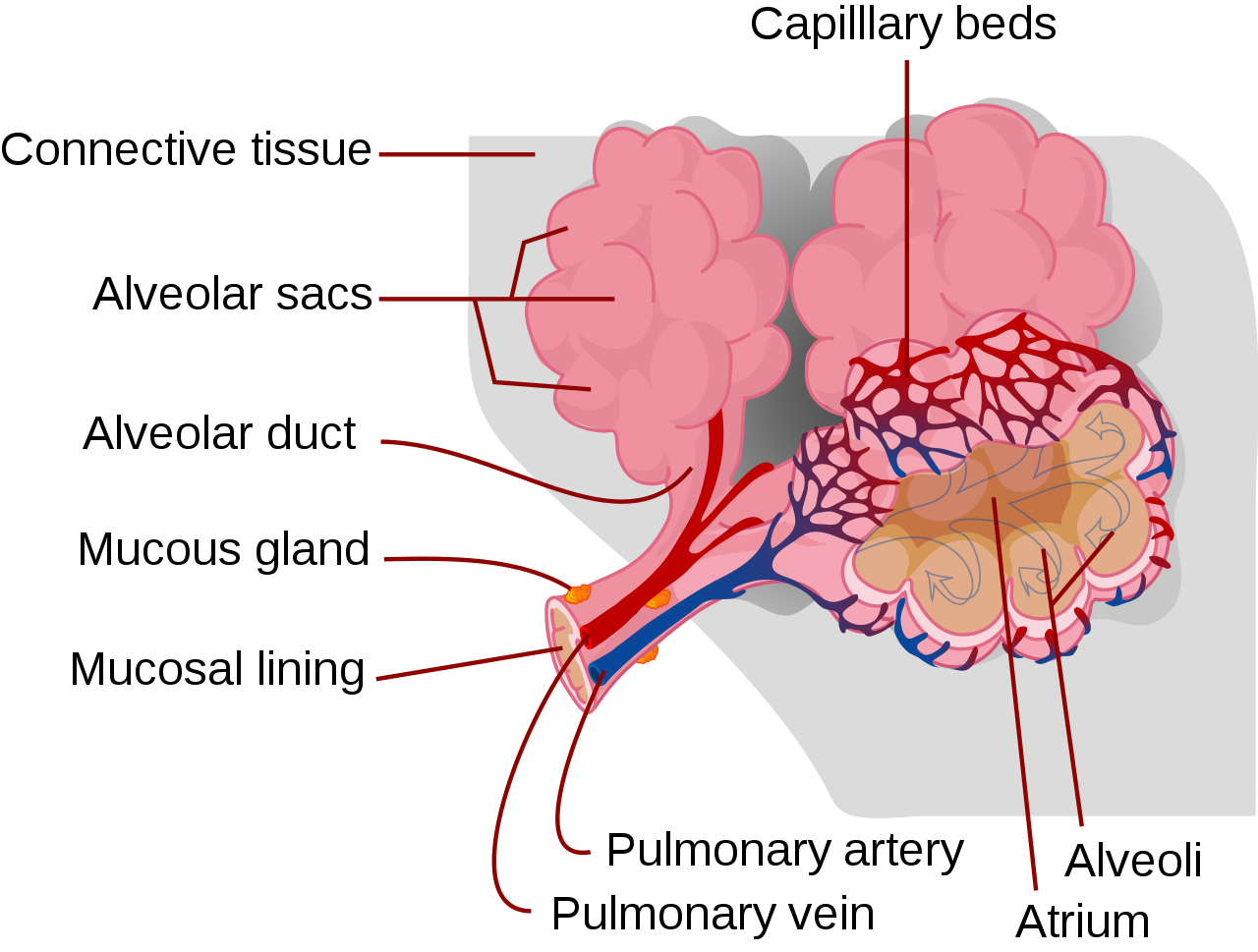The mammalian gaseous exchange
system
Gaseous exchange: is the
transfer of oxygen from the air into the blood and carbon dioxide in the blood
to the air.
The gaseous exchange
system has to keep a balance in providing gaseous exchange and making sure not
too much water is lost from the body.
This is what the main
gaseous exchange system looks like:
Nasal Cavity: warms air that
enters the body and can trap dust and bacteria which protects the body from
diseases, hairy nose hairs warm air breathed in to body temperature (37◦) this
also reduced evaporation from the lungs by limiting the concentration gradient
for diffusion to occur.
The main features of the
nasal cavity is that it has good blood supply and lined with hairs and mucus
secreting hairs called epithelial and goblet cells respectively).
Trachea: Prevents the collapse of the respiratory system and traps
dust and bacteria and has cilia which sweeps mucus and dust away from the
lungs.
-It is supported by flexible
rings of incomplete rings of cartilage and lined with goblet cells and ciliated
epithelium cells.
Bronchus: very similar to the trachea made from incomplete rings of
cartilage and helps prevent collapse of the system.
Bronchioles: Are able to
constrict and dilate (become smaller and
wider) so to control the amount of the air reaching the lungs.
-Capable of doing some
gaseous exchange and contains smooth muscles
with no cartilage and flattened epithelium cells.
Alveoli: A very important part of the system where most of the
gaseous exchange happens, it is a small sac very much like a balloon.
provides a short diffusion
pathway which increases the diffusion rate due to the single layer of flattened
epithelium cells.
contains elastic fibers and collagen which enables the stretching and elastic recoil during ventilation
this can help increase the amount of air that can breathed in and stops it from
bursting.
Alveoli have large surface
areas which can increase the rate of diffusion and has a good blood supply as
many capillaries are very close by which provide a steep concentration of very
high deoxygenated blood and very rich oxygenated blood coming together so the
exchange can happen very quickly.
alveoli is covered with a layer of surfactant which stop
the alveoli from collapsing and keeps it remained open.
Here is what a Alveoli
looks like: note that there are many
thousands of alveoli in the lungs possibly millions!
Ventilation: Air that
moves in and out of the lungs.
Ventilation happens
because of changes in pressure ventilation helps us have a steep concentration
gradient in the lungs of low and high oxygen concentration which allows for
very fast gaseous exchange.
There are two types of
ventilation called inhalation and expiration more commonly known as breathing
in and out.
the steps of how each
process occurs is written below:
Inspiration (Inhalation- breathing in)
1-External intercostal
muscles contract
2-Ribs move up and out
3-Diaphragm contracts and
flattens
4-Throax volume increases
5-Air pressure in the
lungs lower
6-Air moves into the lungs
Expiration (Exhalation-breathing out)
1-External intercostal muscles
relax
2-Ribs move down and in
3-Diaphragm relaxes and
goes to being domed shaped
4-Throax volume decreases
5-Air pressure rise
6-Air moves out of lungs
TIP: As you may have noticed that Inspiration is the opposite of Expiration
so it may be easier to just learn one and just write the opposite if needed when
it comes to the exams.
Inspiration is a active process
which means it needs energy but Expiration at rest is passive and does not require
energy. However forceful expiration does require energy such as when you are coughing.
**REMEMBER TO STAY POSITIVE LIKE A PROTON!**

No comments:
Post a Comment